Walking With A Mountain
A funky farewell to the late, great Tim Cronin — and to Chuck Mangione and George Kooymans
My old friend
, with whom I crossed paths a fair amount during his 80s/90s days with the Blake Babies, Lemonheads and Antenna, recently posted one of the finer tributes to Ozzy Osbourne that I’ve read. It doesn’t mirror my own teenage experiences with Ozzy and Black Sabbath at all, though I wish it had; in reality, I’d spent my early teen years terrified by Sabbath, and my later ones full of punk-rock-fueled contempt for them and for Ozzy. I didn’t really recognize their collective brilliance until college — just in time to enjoy the hell out of the surprise all-Sabbath set that John and his fellow Lemonheads performed at Vassar during my sophomore year, a set which he mentions in his piece.But one other thing about John’s piece really hit a nerve — his saying that someone called him out for being “too quick to post on social media about how I’m ‘gutted’ or ‘devastated’ by the passing of some public figure I may or may not have known.” I have had similar encounters in the past with self-appointed social media scolds who take it upon themselves to parse and police things like others’ celebrations of a famous person’s birthday or expressions of sorrow over a famous person’s demise. And these encounters have always made me wonder, “What the fuck is your problem, pal?”
Here at Jagged Time Lapse, I write a lot about people who have died — not because I want to be some sort of rock n’ roll undertaker (a phrase which Ozzy surprisingly never used for a song title), but simply because there’s been a fair amount of death in recent years among folks whose music has inspired me, comforted me, or significantly impacted my life in any number of ways. Is it so wrong to salute them on their way out with a positive acknowledgement of the difference that their work has made in the fabric of one’s existence? Saying “thanks” just seems like good manners, at the very least…
Was I friends with Ozzy, Jerry Butler, Lou Christie, Lalo Schifrin or Brian Wilson? No. Did news of their deaths come as a gut-punch to me? Absolutely, just as it did for so many of their other fans, and writing or talking about them has helped me work through the emotions and memories that were churned up by their exits. Because even if we don’t have a personal relationship with our favorite artists, we so often form a personal relationship with their music — perhaps because it has soundtracked crucial moments in our lives, or provided us with much-needed uplift in dark times. So when we lose these folks, it feels like we also lose a bit of ourselves, and a precious bit of our pasts. And it’s perfectly okay to feel that way; that sense of connection is not only valid, but it also speaks to the essence of all that is wonderful and worthwhile about music in the first place.
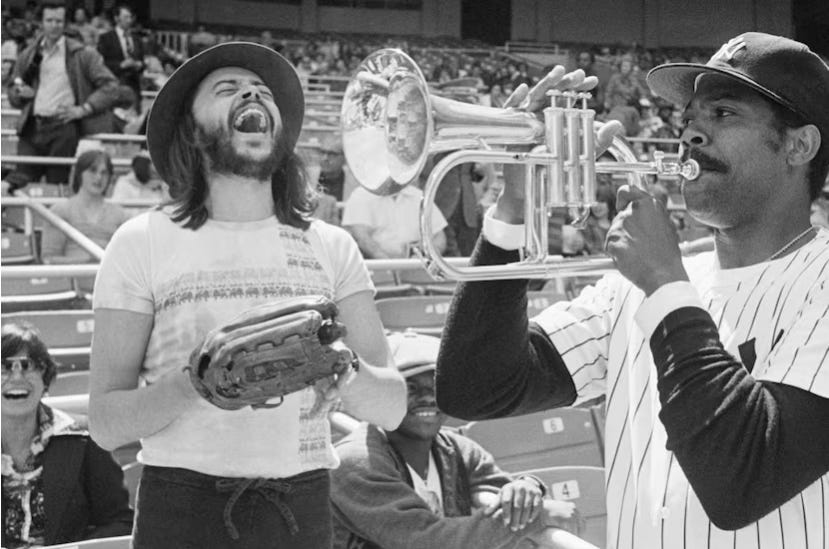
And sometimes an artist passes who wasn’t your favorite, but who nonetheless created a piece of music that you intrinsically associate with a certain period of your life. Can I name more than a handful of Chuck Mangione songs of the top of my head? Nope. But his perpetually-grinning face was such a ubiquitous fixture on late-70s TV, and his jazz-pop-fusion instrumental smash “Feels So Good” was so omnipresent during the spring of 1978 — the period in which pop music became more than just a summertime distraction for me — that I practically jumped for joy in 2008 when I discovered the above “none more 70s” pic while doing photo research for my book Big Hair and Plastic Grass: A Funky Ride Through Baseball and America in the Swinging ’70s.
Mangione followed me out of the 1970s in other ways, as well: Right before 2011 turned into 2012, I found a pristine 45 rpm promo of “Feels So Good” in a bin at a Palm Springs thrift shop, and decided right then and there that it would be the first song I played in the coming new year. That choice seemed to cast a happy glow over the ensuing twelve months, a period in which Big Hair came out in paperback, I signed a deal for what became Stars and Strikes: Baseball and America in the Bicentennial Summer of ’76, was assigned to pen a weekly baseball-and-music column for Rolling Stone, and got to do a whole lotta other cool work and life stuff, as well. Mangione’s death last week effectively put my 1978 and my 2012 even more firmly in the rear-view mirror than they already were, but I’m thankful just the same for the good musical vibes that his song bestowed upon me during those memorable years. Toot in peace, good sir…
I likewise don’t roll particularly deep with the discography of George Kooymans, the Golden Earring guitarist, vocalist and songwriter who passed away last week after suffering from ALS for four years. His diagnosis in early 2021 prompted the legendary Dutch band to call it quits after nearly 60 years of activity; they’d had some major hits in the US with 1973’s “Radar Love” and 1982’s “Twilight Zone” (both of which Kooymans wrote or co-wrote), but I’ve somehow never managed to more than skim the surface of their massive post-1970 discography.
On the other hand, the band’s 1960s catalog — recorded when they were still known as Golden Earrings — is incredibly dear to me, and has been for over three decades now. My dear friend and Fancy Trolls bandmate Eric Colin Reidelberger hipped me to their 1967 album Winter-Harvest shortly after we’d moved to L.A. from Chicago in 1993; we were both going through a heavy 1960s British pop-psych phase at the time, and he quite rightly surmised that I would deeply dig the album’s Kinks-, Who- and Small Faces-influenced originals, all of which were co-written by Kooymans (he’s the one on the cover wearing the stylish foulard) with Earrings bassist Rinus Gerritsen.
Winter-Harvest remains one of my favorite albums of 1967, but it’s also one of my favorite albums of 1993, because that’s the year when I discovered it… and its closing ballad, “There Will Be a Tomorrow,” always instantly transports me back to a gorgeous Amsterdam evening in June 2006, when — following a wonderful dinner with my friends Carol and Jessie — I walked the city’s canals alone while listening to an iPod playlist of favorite “Nederbiet” songs. “There Will Be a Tomorrow” came up on shuffle just as the sun was making its final descent over the funky old city, and I felt so full of joy and gratitude in that moment that I practically floated back to my hotel. So dankjewel for that indelible memory, Mr. Kooymans…
And then there’s Tim Cronin, whom I did know, but whose music — even though I dug it immensely — ultimately had less of an impact upon me than his friendship, generosity and wonderfully twisted sense of humor. You can get a nice sense of the latter from the cover of Bar Ballads and Cautionary Tales, the 2003 album by his long-running Red Bank, NJ garage-rock combo The Ribeye Brothers, which features Tim drowning his sorrows while wearing a gigantic rabbit suit…
I first became aware of Tim in the spring of 1993, when a promo copy of Monster Magnet’s TAB EP showed up at See Hear — the record store I worked at in Chicago — courtesy of Caroline Records. I had somehow been completely unfamiliar with Monster Magnet up until this fateful moment, but the 32-minute space-grind of the EP’s title track turned me into an immediate convert, and sent me scrambling to grab a copy of their 1991 album Spine of God, which is still one of my all-time favorite slabs of stoner rock.
Originally released in 1991, Tab was actually the final Monster Magnet recording to feature Tim on drums. (He’d co-founded the band in 1989 with his future brother-in-law Dave Wyndorf and guitarist John McBain.) By the time Spine of God rolled out, he was billed as “Dope/Lights/Center of the Universe” on the album’s back cover, which also featured the alluring motto, “It’s a Satanic drug thing… you wouldn’t understand.”
(Oh, I understood, all right. In fact, right before leaving Chicago for good, I’d popped Tab into the CD player while taking way too many mushrooms with my friend Pete, and marveled as the music conjured up vivid images of a dark and vast desert plain criss-crossed by whirling tornados made out of human skin. “Musta been all the phase shifters,” Dave Wyndorf sagely suggested several years later, when I told him about my experience.)
When I caught Monster Magnet in concert for the first time (that October at the Troubadour in West Hollywood), Tim was not onstage but rather upstairs in the lighting booth, where he dramatically enhanced his pals’ blistering set with a low-budget yet truly mind-frying array of video projections, which included everything from lurid car crashes and skulls exploding in slow motion to snippets of 1970s drug education films. I would go on to see Monster Magnet many, many times over the next two decades — including watching them film a completely surreal lip-synched performance of “Space Lord” for an episode of Penn and Teller’s Sin City Spectacular, where Charo was also one of the guests — and while they were never less than face-melting, their shows always ascended to a whole other level of gleeful malevolence on the occasions when Tim was handling the visuals.
Tim and I became friends in May 2011, when he reached out to me via email to say how much he and Wyndorf had totally dug Big Hair and Plastic Grass. Coming from a couple of guys who’d based their entire band concept around distilling the freakier, bad-trippier aspects of the 1970s into a bong-rattling musical assault, this was high praise indeed. Not that I ever figured they’d be into baseball, but it turns out Tim was a longtime (and long-suffering) Mets fan — and so a delightful internet correspondence was born, one which generally bounced around between baseball trivia and music-related bullshitting.
Ever humble and self-deprecating to a fault, Tim would always preface his messages with something like, “I know you’re busy, but…” or apologize at the end for being long-winded — as if I didn’t have all the time in the world for such a kindred spirit. He would also very generously surprise me from time to time with care packages of Monster Magnet swag, or oddball records that he thought I’d dig. (Thanks to Tim, I now own pristine vinyl copies of both of Denny McLain’s organ albums and the two-time AL Cy Young winner’s 1968 single “Lonely Is the Name” b/w “Extra Innings”.)
For years, at least until he stopped posting new entries, my favorite blog in the entire cyberverse was Tim's blog Ugh!, which featured everything from old phone books and music business ephemera to Tim’s brilliant collages made from other people’s album covers. But the best part of Tim’s blog were his slice-of-life stories, which hilariously captured the maddening inanity of dealing with the public, whether as a customer at Jersey diners, a shopper at the Foodtown grocery store, or (especially) as a clerk behind the counter at Jack’s Music, the Red Bank institution where he’d worked since the 1990s.
The following entry from August 2019 truly embodies the succinct brilliance of Tim’s record store tales, and his knack for punctuating them with the perfect image:
I hate me part 888,751
Older middle aged guy, a little drinky, looking through the new arrivals LP rack
Yeah, so records are back, are these in any order?
I explained our filing system
So, no good stuff…I’m surprised you don’t have the good…popular stuff.
Well, popular stuff sells.
Yeah, but are you telling me people are still buying the Stones?
Yeah, Rolling Stones records sell.
Really? I took my daughter to see ‘em…so…you have a guy in his 50’s taking a 30 year old to see a 70 year old…amazing…so where’s the good stuff?…Olton John, I don’t see his stuff in the O’s
Well, his name is Elton John and we file him in the J’s
Oh… so where’s the good stuff?
I did a fake phone call and hid in the back until he left
Thanks to posts like that one, I gradually developed a possibly unhealthy obsession with Jack’s Music — I was absolutely thrilled when Tim included a Jack’s bag in one of his care packages — and hoped to someday meet Tim there. That chance finally came in the summer of 2023, when my girlfriend and I made a stop in Red Bank on our way back to the Hudson Valley after spending a few days at the beach in Ocean Grove. I messaged him ahead of time to make sure that a) he’d be on the job when we rolled through, and b) it would be okay for me to bug him at work, and he sweetly responded that “I’d be honored to meet the man who made me not hate Thurman Munson.”
I racked my brain ahead of time, trying to come up with the most perfectly annoying/off the wall request to shout at him as I came through the door, but the best I could do was a “Hey Man — you got Fabio After Dark?” It wasn’t my finest comedic moment, but Tim chuckled just the same, and then we commenced to blabbing about music and baseball as if we’d been hanging out for decades. Knowing that I was into reel-to-reel tapes, he’d thoughtfully dug reels of Simon & Garfunkel’s Greatest Hits and War’s Why Can’t We Be Friends? out of the bowels of Jack’s storage area and gave them to me as a presents, a gesture which touched me deeply.
I knew that Tim was a big dude, but just how big wasn’t apparent to me until I actually met him in person; in another life, this veritable mountain of a man could have easily been a professional wrestler. But using that bulk to intimidating ends wasn’t his bag at all; if anything, Tim was the very definition of a “gentle giant”. The guy was warm, thoughtful, tirelessly creative, funny as hell and clearly got a genuine kick out of sharing his pop cultural obsessions with like-minded people.
Sadly, we lost Tim a couple of weeks ago. His family announced in March that he was suffering from ALS, the same disease that felled George Kooymans. ALS is a horrific disease with no known cure — though leave it to Tim to find the ironic humor in being a Mets fan diagnosed with Lou Gehrig’s Disease. And indeed, he continued to crack wise right up until his death, while also graciously acknowledging all the love and support projected his way by friends from all over the world.
In one sense, life gave Tim Cronin a really raw deal. And yet, he was also someone who truly made the most of his time here, and got back so much in return. Whenever I needed cheering up in the days after his passing, all I had to do was go to his Facebook page and read some of the comments posted there from people whose lives he had touched — folks ranging from former tour mates to childhood pals to Jack’s customers who never forgot him recommending a certain record to them years ago. And while I admittedly cursed the fates for taking Tim from us at the way-too-young age of 63, I am ultimately thankful that I got to know him and call him my friend. Tim left this world richer than any billionaire could ever be, and his presence here significantly enriched my life as well.
Thanks for everything, Tim; I’m gonna go spin that War reel right now in your honor. Hope you find some good diners in the next realm.



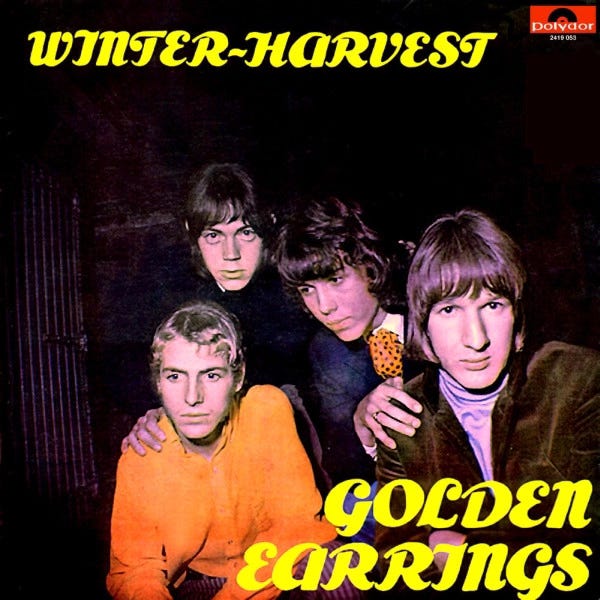

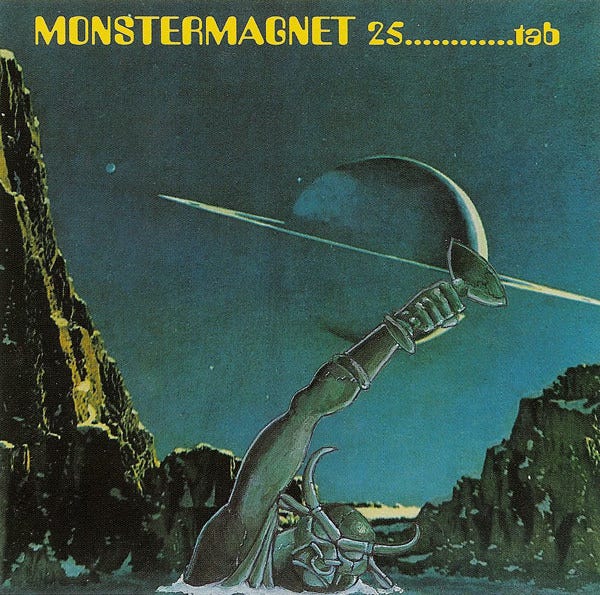
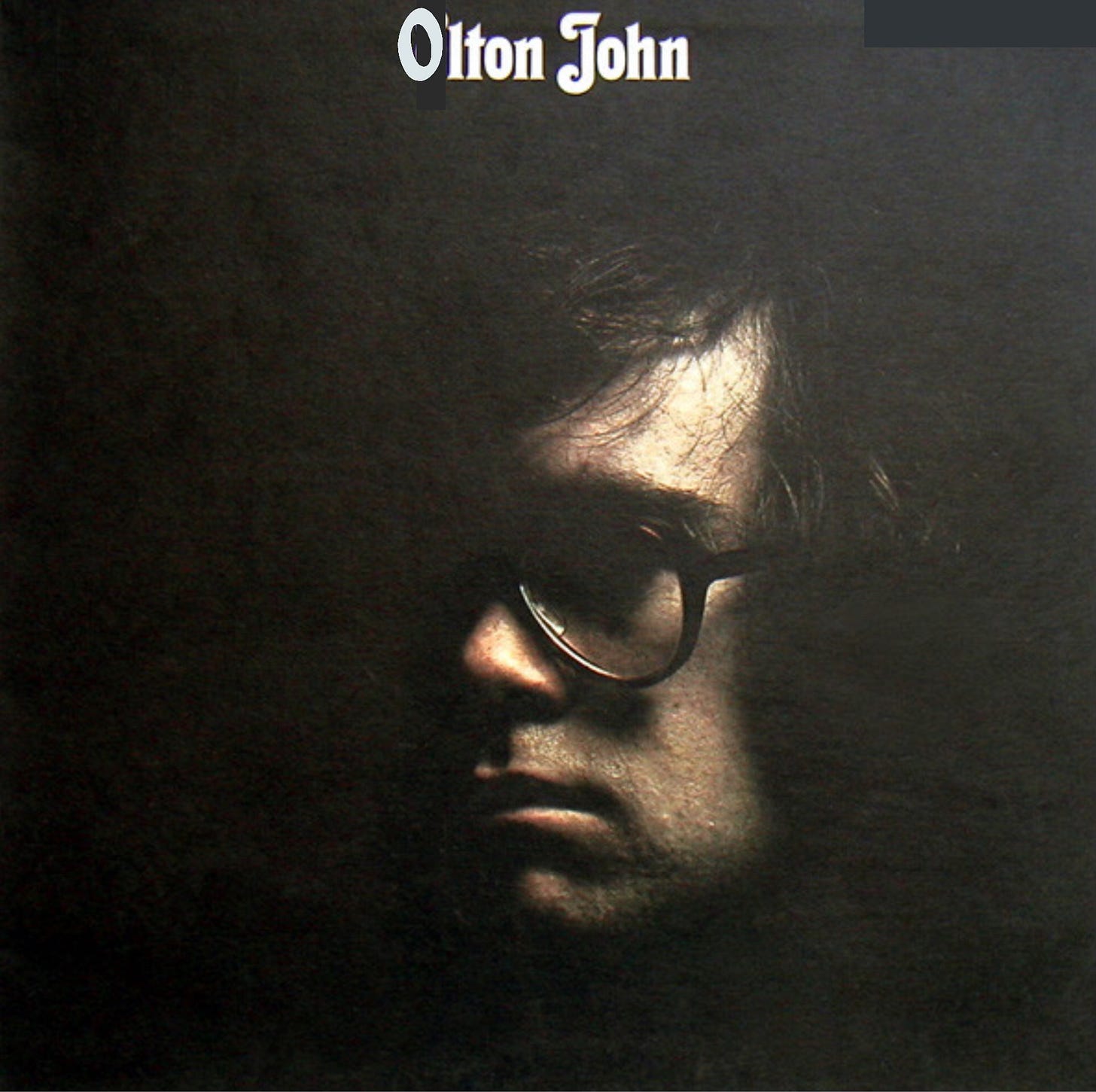
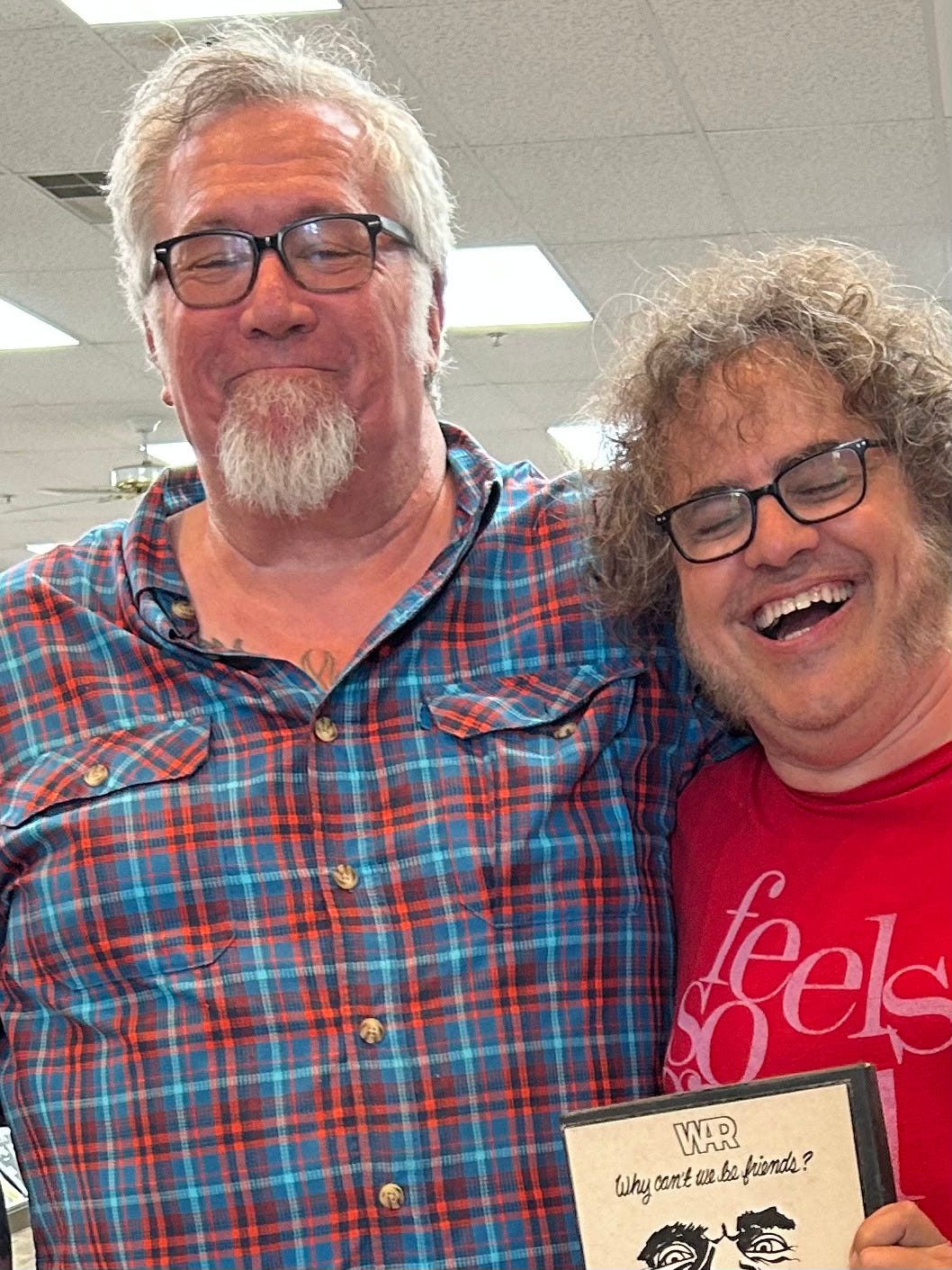
I can see why that era of Golden Earring attracts you so much. I was unaware!
Beautiful work Dan, sure wish I knew Tim.